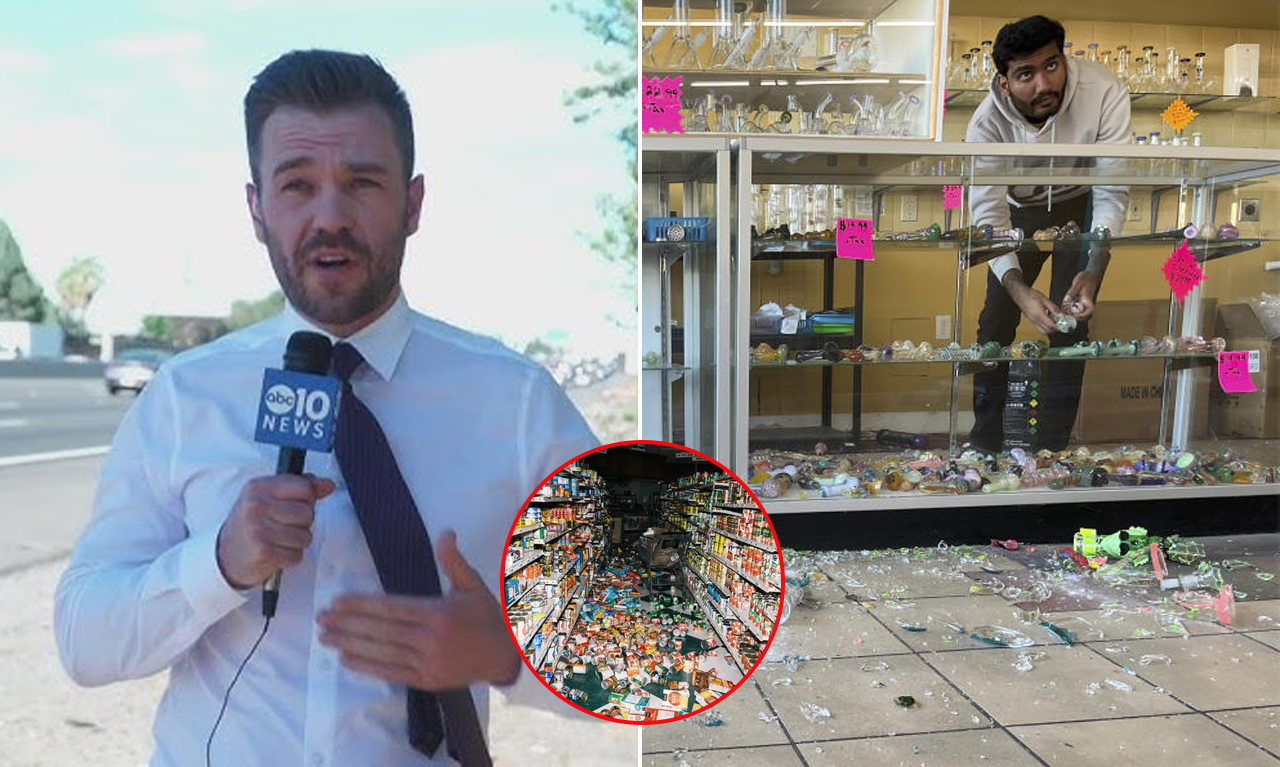
A powerful earthquake struck 30 miles off the California coast on Thursday morning, prompting emergency tsunami alerts to buzz on more than half a million cellphones and sending cans and bottles crashing to the floors of grocery stores in the rural communities closest to the epicenter.
Yet despite the earthquake’s intensity — a magnitude of 7.0, according to the U.S. Geological Survey — the shaking caused little damage because of its remote epicenter in the Pacific Ocean, 200 miles north of San Francisco Bay. The tsunami warnings were canceled about an hour after they were issued.

In Petrolia, southeast of the quake’s epicenter, Margit Cook, 73, a clerk at the Petrolia General Store, said it was one of the largest earthquakes she had experienced in the 53 years she has spent in the remote Northern California community.
“It just started rolling real slow and got bigger and bigger and then hit,” she said. “And it hit real hard. I just kind of stood there and watched my refrigerator walk across my kitchen floor.”
At one point, more than than 10,000 customers had lost power in Humboldt County, according to the site poweroutage.us. More than a dozen aftershocks struck after the initial quake, all off the Northern California coast.

It has been more than three decades since California has suffered a catastrophic earthquake, a period of seismic silence that scientists say will inevitably be shattered by what Californians warily call The Big One.
The last major damaging quake in Northern California, in 1989, had a magnitude of 6.9 and left 63 people dead and more than 3,700 people injured. In Southern California, an earthquake in the Northridge neighborhood of Los Angeles in 1994 left 60 people dead, about 7,000 injured and more than 40,000 buildings damaged.
Thursday’s earthquake struck at 10:44 a.m. Pacific time in an area that seismologists call the Mendocino triple junction, a tectonic meeting point of three major plates. The interaction of the plates causes a large number of earthquakes, according to Lucy Jones, the former head of natural hazards research at the U.S. Geological Survey.
An earthquake with similar force would have been devastating on the faults that run under highly populated areas of California, such as the Hayward fault that runs through Berkeley, Oakland and many other cities just east of San Francisco, Dr. Jones said.

The tectonic rupture that caused Thursday’s earthquake was almost purely horizontal, meaning that two faults had slid past each other. Scientists call this kind of earthquake a “strike slip,” and it is unlikely to cause major tsunamis. That raised questions about why warnings were sent telling residents they were “in danger” and should move to high ground.
Christine Goulet, the director of the U.S. Geological Survey’s Earthquake Science Center, said in an interview that the area where the earthquake struck is unpredictable.
Though she was not involved in sending the tsunami alert, Dr. Goulet said she understood the rationale.

“We all have this goal of saving lives — and going fast, you want to alert just in case, so that people have time to take protective action,” she said.
In the areas closest to the epicenter, residents said the earthquake felt like a violent elevator ride.
“You could hear it as well as feel it,” said Sue Nickols, a vice principal at an elementary school in Eureka, about 50 miles northeast of the epicenter. Ms. Nickols, who was home enjoying a day off, said she moved under a desk in her family room and did “what I have spent years teaching the kids to do — duck, cover and hold.” She watched the house shake and her lamp swing side to side, then headed to her school when the rumbling stopped.
When she got to the campus, the students had been evacuated to a field outside the classrooms.
“They were scared,” she said. “But we’ve trained with them, and that’s the good part. So they knew what to do.”
By lunchtime, Ms. Nickols said, classes had resumed.
“It looks like there’s no damage,” she said, speaking from the campus. “Although there goes my day off.”




